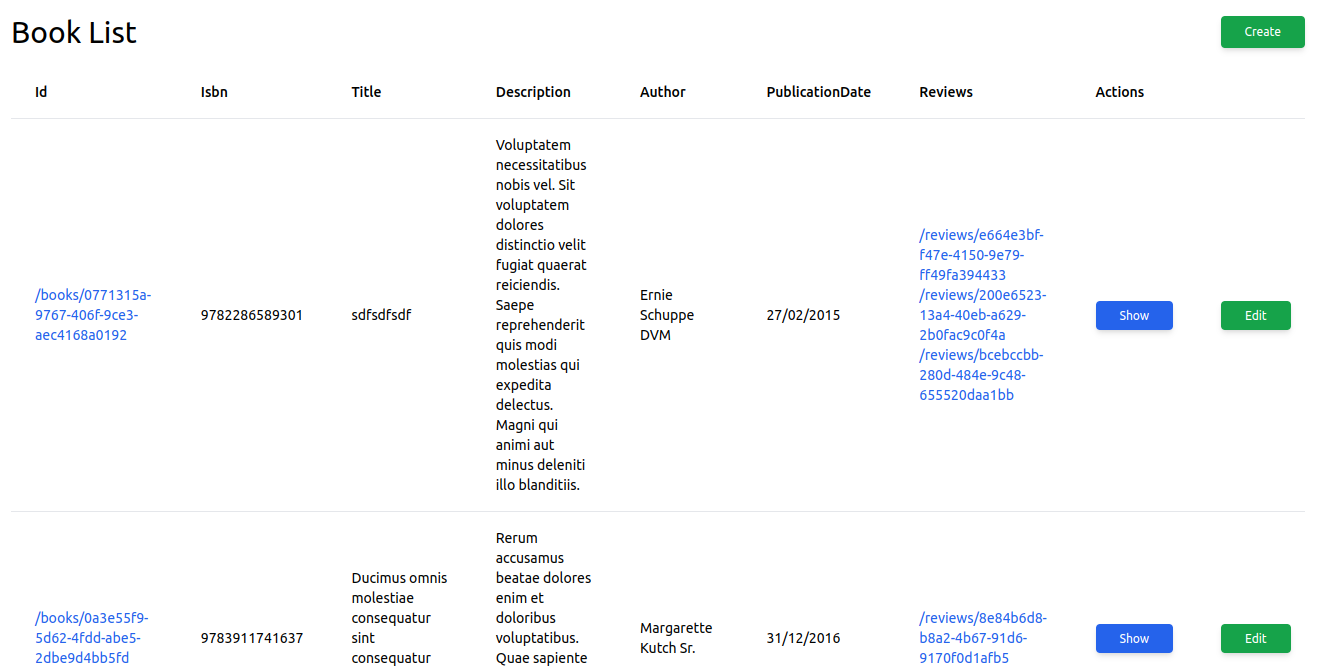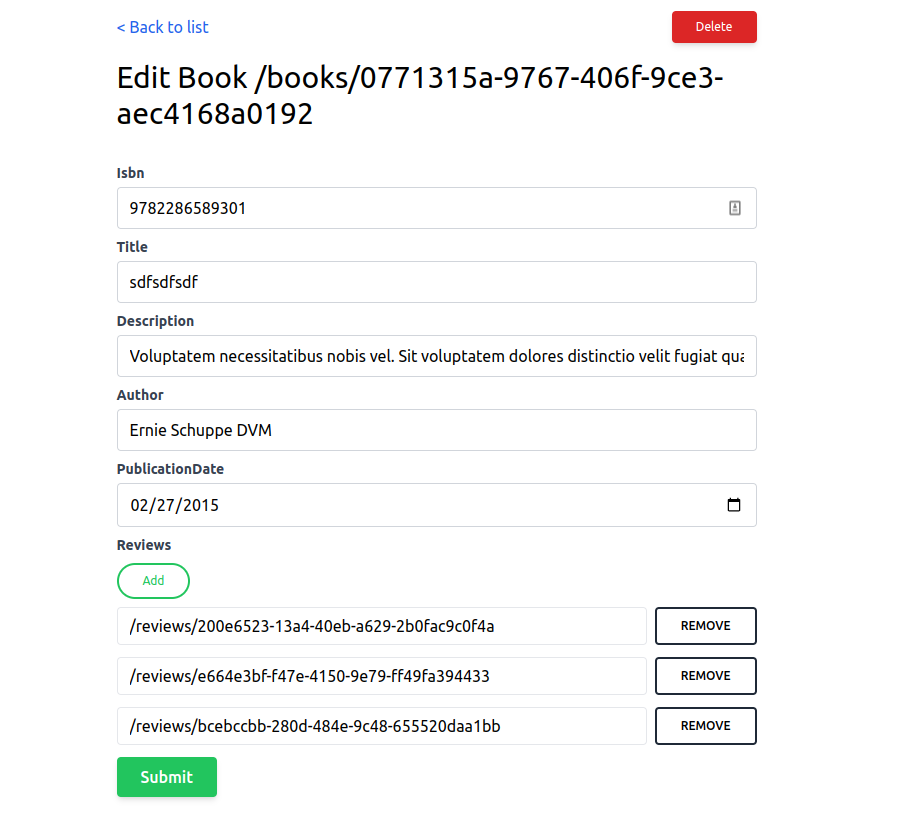Nuxt Generator
Bootstrap a Nuxt 3 application:
npx nuxi init my-app
cd my-app
Install the required dependencies:
yarn add dayjs @pinia/nuxt qs @types/qs
To generate the code you need for a given resource, run the following command:
yarn create @api-platform/client https://demo.api-platform.com . --generator nuxt --resource foo
Replace the URL with the entrypoint of your Hydra-enabled API. You can also use an OpenAPI documentation with https://demo.api-platform.com/docs.jsonopenapi and -f openapi3.
Omit the resource flag to generate files for all resource types exposed by the API.
Add Pinia module in nuxt.config.ts:
// https://nuxt.com/docs/api/configuration/nuxt-config
export default defineNuxtConfig({
// ...
modules: ['@pinia/nuxt'],
// ...
});Delete app.vue as it will prevent Nuxt router to work correctly.
Optionally, install Tailwind to get an app that looks good:
yarn add -D tailwindcss postcss autoprefixer
yarn tailwindcss init -p
Add this code in nuxt.config.ts:
// https://nuxt.com/docs/api/configuration/nuxt-config
export default defineNuxtConfig({
// ...
css: ['~/assets/css/main.css'],
postcss: {
plugins: {
tailwindcss: {},
autoprefixer: {},
},
},
// ...
});And this code in tailwind.config.js:
/** @type {import('tailwindcss').Config} */
module.exports = {
content: [
'./components/**/*.{js,vue,ts}',
'./layouts/**/*.vue',
'./pages/**/*.vue',
'./plugins/**/*.{js,ts}',
'./nuxt.config.{js,ts}',
'./app.vue',
],
theme: {
extend: {},
},
plugins: [],
};Create the file assets/css/main.css and add this code in it:
@tailwind base;
@tailwind components;
@tailwind utilities;You can launch the server with:
yarn dev -o
Go to https://localhost:3000/books/ to start using your app.
# Screenshots


You can also help us improve the documentation of this page.
